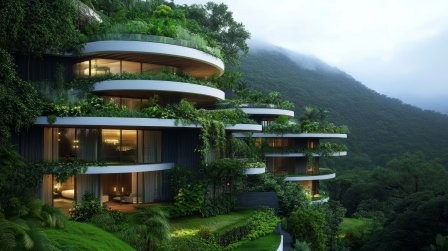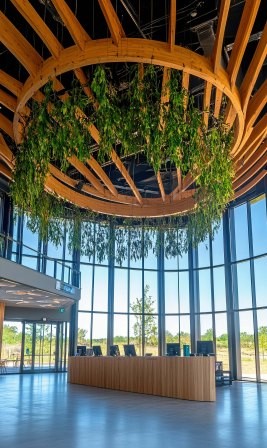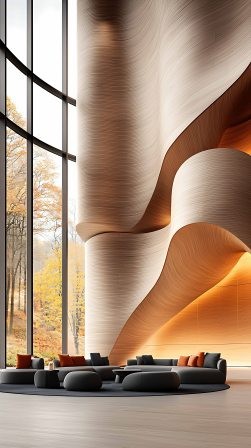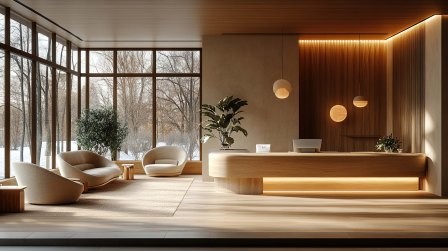

Printable PDF version
Subscribe to our newsletter
Biophilia in Building Design
Healthcare Facility Design Post-Covid
Tariffs and Other Changes
Construction
Management Specialists
Los Altos, CA
(650) 386-1728
Orinda, CA
(415) 981-9430
Sacramento, CA
(415) 872-0996
San Diego, CA
(858) 886-7373
Los Angeles, CA
(424) 343-2652
Seattle, WA
(206) 571-0128
Phoenix, AZ
(408) 868-6326
Portland, OR
(415) 359-5207
Dublin, Ireland
+353 86-600-1352 (Europe office)
www.TBDconsultants.com
Biophilic design might sound as if it could be an enhanced version of green design, but the two really have different focusses. Green building design is centered mainly on sustainable construction and buildings that are good for the planet, or at least better than 'traditional' construction. Biophilia means "love of life" and suggests that we humans seek a connection with nature and that such a connection benefits us. Consequently, biophilic design is centered on the building's effect on the health and well-being of those who interact with it. The idea is to build up connections between people and their environment and, to achieve that, the features in the building should tie in with the local natural environment.

Despite the different goals of the two design principles, there will be considerable overlap in the implementation of them, and the interconnection of the affected systems emphasizes the need for early and ongoing coordination between the various design disciplines.

Being out in nature is something that most people find enjoyable and to be an ideal way to reduce stress levels, so incorporating a 'living landscape' into the building is a common feature of biophilic design. That might include such things as living walls, rooftop gardens, and planters and pots throughout the building. One of the first green roofs that this writer worked on was what might be called a brown roof because it relied on natural rainfall for irrigation. During Sacramento's long hot summers the vegetation would die back and regrow when the rains came in autumn. Although wildfires might be seen as an aspect of nature, having dead, dry, vegetation on your roof is probably not a great idea in this current climate. Also, the idea of introducing nature into the building is meant to create a more relaxed environment to work in, but, for some people, seeing a spider walking across the floor towards them can raise stress levels substantially.
Bringing the feel of nature into a building does not necessarily mean turning the building into an indoor botanical garden. The use of natural building materials, such as wood or stone can have similar effects, especially if the material is locally sourced so that it gives a tie-in to the surrounding landscape. Incorporating features seen in nature, such as Fibonacci-series curves, water features, or structural elements that branch out like trees can also give that feeling of the natural world. Adding paintings of nature scenes can also work. Bringing in, or reproducing, the sounds and possibly the smells of nature is another method that can be used to good effect, and you might achieve some natural ventilation into the bargain.

Natural daylighting ties in with our biorhythms and gives health benefits, and if the windows that facilitate this daylight also allow views of nature, that's a double benefits. Natural daylighting tends to be the most requested feature when surveys have been conducted. Not every room may be able to achieve a decent level of natural daylighting but, if the artificial lighting can replicate some of the changing conditions of daylight, benefits can still accrue.
Such biophilic features have been shown to reduce the stress levels of people working in the building, and to increase their productivity (around an 8% increase, according to some studies). That adds benefit to the company using the space and can add value to the building. Adding 'eye appeal' to the building by the incorporation of biophilic features will likely increase its value anyway.
The cost impact of biophilic design can obviously vary substantially depending on what is done, and the life cycle costs really need to be assessed. For instance, adding more plants into the design is going to be a noticeable upfront cost, but that is at least partially offset by the potential increase in value of the building. Of course, those plants will need additional ongoing maintenance, but the sights and aroma of the plants, and the improved air quality, can create a less stressful and consequently more productive work environment. Increasing the natural lighting will most likely add to the cost of the building's enclosure, but the building owner will be getting savings in energy costs for lighting for the lifetime of the building.
This article has been written before the final version of LEED 5 has been published but, based on the discussion document, biophilic design can apply to a number of credits and prerequisites. These include the Carbon Assessment prereq, the Integrative Design Process credit, the Heat Island Reduction credit, and the Indoor Environmental Quality category generally and specifically the Connecting with Nature credit.

Healthcare Facility Design Post-Covid
The Covid-19 pandemic changed a lot of things, and here we look at its impact on the design of healthcare facilities.
Tariffs have become a big talking point recently, and here we take a look at their impacts, and impacts of some other policies of the current administration, on the construction industry.
Design consultant: Katie Levine of Vallance, Inc.